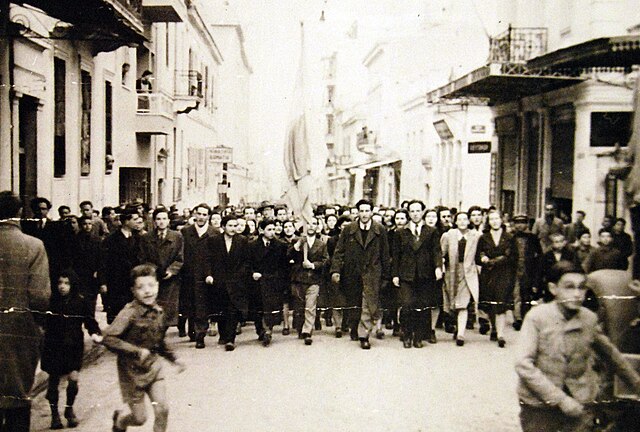Panhellenic Union of Fighting Youths
The Panhellenic Union of Fighting Youths was an anti-Nazi and anti-fascist movement that took part in the Greek resistance during the Axis Occupation of Greece in the Second World War. The organization was concentrated in the areas of Athens and Piraeus, and although it never expanded to become a wider movement, it was one of the most active of the multitude of urban resistance groups that sprung up during the Occupation, and one of the first to carry out active resistance, in the form of bombings.
The PEAN Museum building in Kallithea, formerly used a hideout for the organisation
Two front pages of the Doxa newspaper
The Greek resistance involved armed and unarmed groups from across the political spectrum that resisted the Axis occupation of Greece in the period 1941–1944, during World War II. The largest group was the Communist-dominated EAM-ELAS. The Greek Resistance is considered one of the strongest resistance movements in Nazi-occupied Europe, with partisans, men and women known as andartes and andartisses, controlling much of the countryside prior to the German withdrawal from Greece in late 1944.
Athens University students parading on Greek National Indpendence Day (25 March) 1942, in defiance of the German and Italian occupation forces; the parade was eventually dispersed by Axis troops.
German soldiers raising the German War Flag over the Acropolis of Athens. The symbol of the country's occupation, it would be taken down in one of the first acts of the Greek Resistance.
Aris Velouchiotis, chief captain of ELAS
Napoleon Zervas, leader of the military wing of the EDES, with fellow officers






